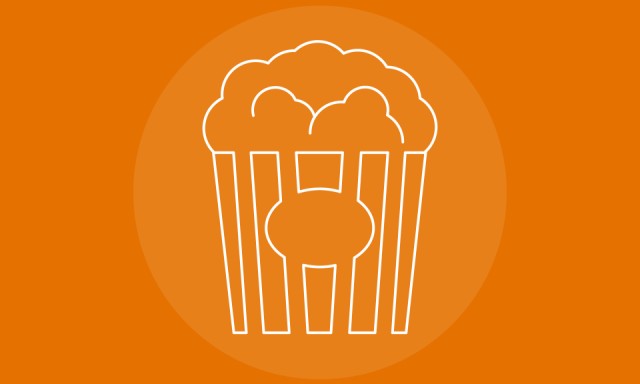
Positioning Your Positioning: High Rationality and Low Emotion
Vertical position matters in marketing communications. We’ve known this for years. But our research shows a new finding about verticality: Deciding whether to place promotional content higher or lower is especially important when the appeal of a product — from sports cars, food items and health care products to any number of tangible or intangible goods — is inherently emotional or rational. When designing an advertisement, product packaging, website or nearly any other type of visual communication, our studies show that placing the more emotional appeals lower down and more rational content higher up can augment the final appeal to consumers.
For example, in a granola bar advertisement, the words “a tasty choice” are best placed below a picture of the treat, because “tasty” makes an emotional appeal, whereas the words “the healthy choice” (a more rational culinary claim) are best placed above the picture. Another example: A sports car (generally a more emotional purchase) may promise to “fulfill your dreams” — words that should be placed lower in the commercial. By contrast, a more practical vehicle may advertise, “Save money by increasing gas mileage,” a more rational claim that would be placed higher up to achieve the greatest effect in potential consumers.
Of course, there are some caveats, but let’s dig a bit deeper first.
The Power of Up and Down
Past studies have shown associations between verticality and both power and positivity: Higher-up content is associated with strength and positivity, lower content with weakness and negativity.[1] Our research shows another association with verticality: rationality/emotion. This relationship is rooted in a historical context dating from Plato and antiquity, running right up to Freud and his modern contemporaries.
For centuries, humans have come to associate emotions with the heart (lower in our bodies) and rationality with the brain (higher, anatomically speaking), even though biology shows both originate in the brain. This association is constantly reinforced through cultural and linguistic customs learned from the time we’re children. It’s why we don’t think twice about phrases like “high-level discussion,” “raising the conversation to the rational plane,” “falling in love,” or “feeling something deep down.”
Our research shows how this strong but subtle, often unconscious association of emotions with down and rationality with up can influence a person’s attitudes and preferences about a product or information. In the granola bar example, putting the rational appeal at the top and the emotional appeal at the bottom maximized the impact on buyers. When the rational appeal was placed at the bottom instead, and the emotional appeal at the top, the mismatch was perceived as less fluent, leading to less positive evaluations. To summarize:
| Primary Character of Promotion | Vertical Placement of Messages |
| (may apply to a company, brand, product, marketing campaign or other communication) | (for greatest response)
|
| Strong emotional appeal | Low/down |
| Strong rational appeal | High/up |
| Some emotional appeal | Depends — ask: Is the rational/emotional metaphor the most relevant? |
| Some rational appeal | |
| Contains emotional and rational components | Rational claims — high/up, emotional claims — low/down |
Not a Magic Wand: Some Considerations
Although our research showed a strong association between up and rationality, and between down and emotions, this metaphor is far from a “magic wand” in advertising and marketing, and must be considered in light of numerous factors.
One catch is brand familiarity. In the granola bar example, if the bar is produced by a familiar company or brand about which consumers already have definite opinions, the association attenuates its effect. (However, if a well-known company wants to market a new product or brand, the association may be leveraged successfully.)
Subtlety is another factor. As with many metaphors, when buyers or viewers become conscious of this association, the effect is also diminished.
Many other considerations may override the rational/emotional pull of a product. These factors range from functionality and practicality to established habits and expectations. For example, placing more rationally appealing products at the top of a store shelf may put them beyond customers’ reach. Or emotional words placed too low down means they may be overlooked (thus, an important caveat is that the entire vertical space should be equally visible to viewers). Also, relocating anything from website banners and menus to online advertisements or products on shelves may be logistically difficult or too discordant with expectations to make their repositioning helpful.
Nevertheless, our findings are highly applicable in certain contexts, with implications well beyond marketing communications proper.
Applications
Anyone who composes something visual — from website and logo designers to political campaign sloganeers to everyday employees preparing correspondence or resumes — regularly makes decisions about vertical placement of content.
A few more examples demonstrate how the association we found could be leveraged by public agencies, private companies, nonprofits and individuals alike:
- Ego-expressive brands — from designer clothing labels and luxury goods to high-end food and beverage producers — should consider placing emotional appeals in their television, print or online commercials lower down; more utilitarian brands should position their rational appeals (e.g., regarding cost savings) higher up.
- Political candidates aiming to strike a more visceral, rather than rational, response among voters may strategically place emotionally laden verbiage toward the bottom of their campaign ads. President Barack Obama’s 2008 poster, with the word “Hope” at the bottom, was a case in point. (Note that this placement was effective before Obama became such a familiar figure.)
- Nonprofits, public agencies and educational institutions (such as universities) often make both rational and emotional appeals. Inspire philanthropy or admission applications by placing appeals to pride or loyalty in the lower part of marketing messages, and claims about value and ROI at the top/beginning.
- Everyday employees may want to place more rational content toward the top of an email, letter or personal resume, while saving emotional appeals or images for the bottom (keeping in mind best practices and other possible metaphorical associations, of course).
- Mismatches may be created intentionally to cause products to be less liked or to evoke less of an emotional response — e.g., warning labels may be placed where they will have less impact.
The association between verticality and rationality does not offer a one-size-fits-all marketing technique. However, it provides a new, potentially powerful guideline for managers, designers and communicators — while also reminding us that placement is important and should be strategic, not random.
Luca Cian co-authored “Positioning Rationality and Emotion: Rationality Is Up and Emotion Is Down,” which is forthcoming in the Journal of Consumer Research, with Aradhna Krishna of the University of Michigan Ross School of Business and Norbert Schwarz of the University of Southern California Marshall School of Business.
[1] Schubert (2005) showed the association between verticality and power/strength; Meier and Robinson (2006) found a relationship between verticality and positivity.















